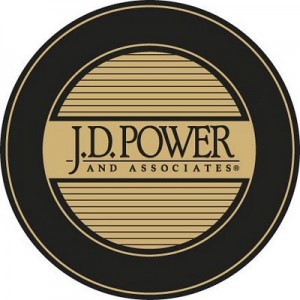Typically, a creative brief is a document that advertisers and ad agencies use for a specific purpose. It has a set of questions whose answers guide ad agency creatives in creating communications, from single emails to multi-media advertising campaigns, and variations in between.
But this same document, slightly adjusted, has another role.
Consider these scenarios: You’re an entrepreneur with only a product idea or a new product idea. You have a small business with a minuscule communications budget. You’re a sole proprietor who wears every hat in the day-to-day operations of your business. Maybe you’re a combination of these situations.
A creative brief is not just an objectives document that a business hands over to an advertising agency or a group of freelance creatives to produce branded communications. Viewed from a broader perspective and with a bit of fine tuning, the creative brief can easily become your marketing purpose statement.
Think of the creative brief as an organizing platform for your thinking about:
- Who you are as a business;
- What you want to accomplish;
- Who you need to speak to, and
- How you go about conducting that conversation
A creative brief, in short, can be your business playbook, your roadmap, your brand rationale, your aspirational mantra. 
This blank document, filled with insightful, perceptive thinking, can direct you and keep you on your path. It can be tested and updated as circumstances change. It is limited only by the breadth of your expectations.
So to help you see the creative brief’s possibilities beyond the traditional role it plays between advertiser and advertising agency, consider five questions.
The answers to these five questions open thinking and actions for entrepreneurs, Small Business Owners (SBOs) and sole proprietors (including freelancers, something I did with much success for half my career as a copywriter and creative director).
Let the answers to the following five questions serve your business. Write out these questions and answer them with honesty. Find a partner to help you craft thoughtful, insightful answers.
It won’t be easy. It shouldn’t be easy. The process deserves your focused energy and time.
1. Can you create a word picture of the person or group of people who would be the likely buyer of your product or service?
I’ve discussed this idea in previous posts, but using slightly different language. The idea is the same. You must know who you are speaking to before you can engage in a conversation that results in a sale. The more details you know about this person, or more likely this group of people, the easier it will be to speak to them.
Don’t use a list of bullet points. Let your inner creative writer emerge as you describe each unique kind of user or buyer in intimate detail. Is she your mother? Your best friend? Are you the ideal user? Why?
You must be able to look deep into the heart of your potential customer and understand what motivates this person to want your product or service. This is how you will find a unique insight. Make an emotional connection with your customer and you have a loyal customer. You will have achieved brand loyalty.
You know more than you think you know about the people who are, or will become, your best customers. But you have to make the effort to examine carefully what you know before you actually understand what you know.
2. Answer the question your customers ask: “What’s in it for me?”
If you can successfully answer question #1 above, you have one, perhaps more, customer insight, some golden nugget about behavior or motivation. This information allows you, requires you, to answer question #2. You have to think like the customer. It’s about their experience, not yours.
Put another way, it forces you to think about product benefits, not product features. In the course of uncovering a consumer insight, you are likely to confirm that a product feature results in a benefit for the reason you thought. Or you’ll discover what the true benefit is, which may be something unexpected.
Here’s an example: When I was creative director for the loyalty programs of a major global airline, we introduced a concierge service for its most elite flyers. The service itself was free, although patrons paid for what the concierge provided for them. We discovered that, while the concierge service itself was rarely used by the airline’s best customers, customer perception of the value of this service was high. It produced additional loyalty to the airline via increased fare purchases. This was measurable. It was a surprising insight, but it opened a window into how we communicated the concierge service to these airline customers.
When you can answer the “WIIFM?” question, you are thinking about why your customer buys and buys again. And again. It takes you out of your reverie about how great the product is, and gets up in your grille about why it’s important to the people who count: paying customers.
3. Can you keep your message single-minded?
As I remind everyone in my college composition classes, K.I.S.S.: Keep it simple, students!
Especially in an era of nano-attention spans, the simpler, more focused and concise the message, the better.
Think of a bed of nails: People can fall asleep on a platform made of hundreds of sharp points. Why? Combined, they do not hurt. Their sharpness is blunted by sheer quantity. Too many points and there is no point. 
But a single, direct, needle-like point always penetrates. Always gets through. Is impossible to ignore.
Your message must have the same attributes. In the ad world, we call it the single-minded proposition: The one key idea that your customer (potential or existing) will find irresistible.
What do I mean by “message”? It’s not just a paid communication like an email or an ad. It could be a speech to a group of investors. A pitch to your banker, a vendor, a potential employee. Heck, to yourself when you find it a challenge to face a tough day (hey, we all have them…)
The most memorable message is short and sweet. That’s one idea worth stealing.
4. Can you prove your message is true?
This isn’t about proving truth in a court of law. It’s about proving reliability or quality or effectiveness in the court of public opinion.
What evidence do you possess about your product that people who buy it love it? The possibilities include:
- Testimonials
- Research
- Awards
- Reviews (customer and professional)
- Media coverage
- Institutional (contracts with big companies or government agencies)
Any one of these pieces of “evidence” to support your product add up quickly into brand equity. Take advantage of them in every way you can. “Leverage” the heck out of them. 
Use ’em or lose ’em.
5. Can you show some attitude?
Students of literature and writing understand this to mean, What is your voice? Every writer has one. It’s the distinct way the writer crafts sentences that make the style unique.
So what is the voice of your product? Your brand? What is its attitude? How does it speak to your customer?
Think of your own favorite brands. What are the single words that come to mind when you think about brands you love to own and use? How do you feel about them?
For example, what do you drive? A Ford? BMW? Each brand conjures a mood and a tone of voice. You probably know it. Some brand voices are iconic, part of our culture. You may not know the exact words the brand chose, but you know what you feel when you wear the brand, drive it, eat it or use it.
You need to create your product’s “attitude” and use those individual words or phrases to communicate what that attitude is. Your list should include no more than five words, each one different. No synonyms.

These attitudes about your product/service/brand also help keep you focused on how you think, believe and act about your product, both within your company and to the world outside.
These five questions, all of which emerge from the core of the creative brief, can play a transformative role for your business even if you never engage the services of an advertising agency. These questions form the heart of your brand.
You need some guideline or roadmap to keep you on track with your business’s aspirations. There is no need to search for some fancy-schmancy instruction manual.
The creative brief contains it all—in one, neat, easy-to-use package.

